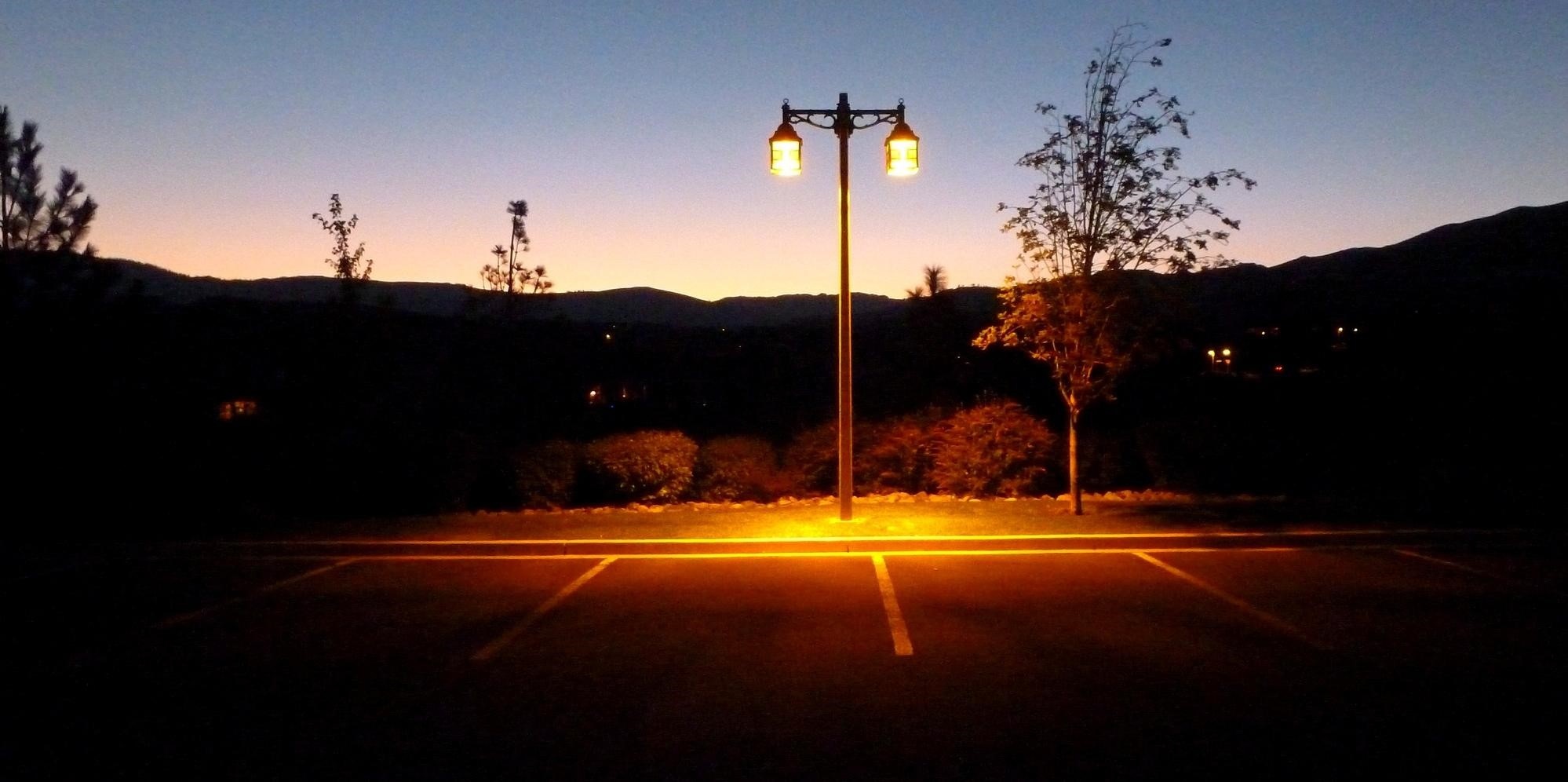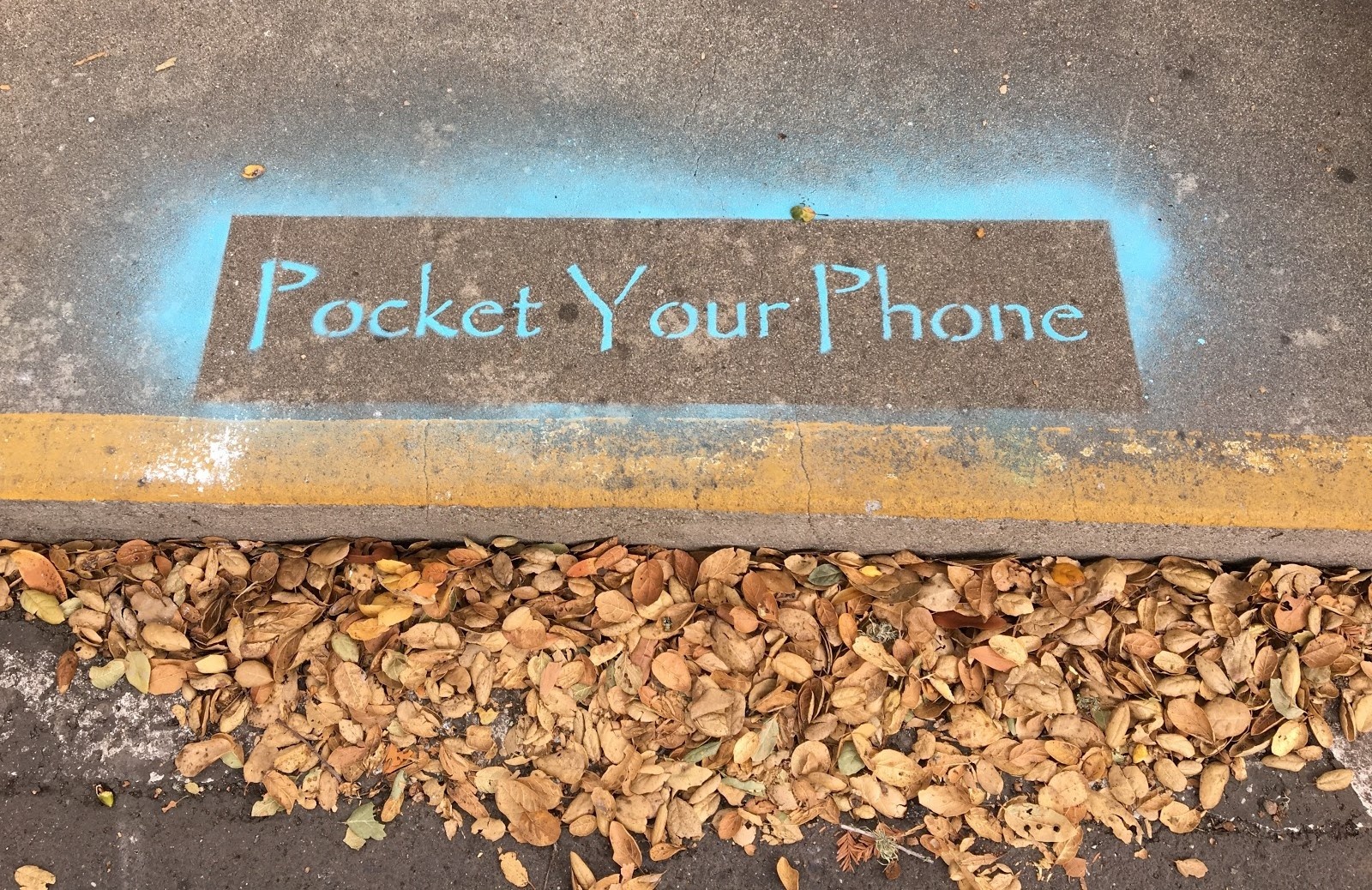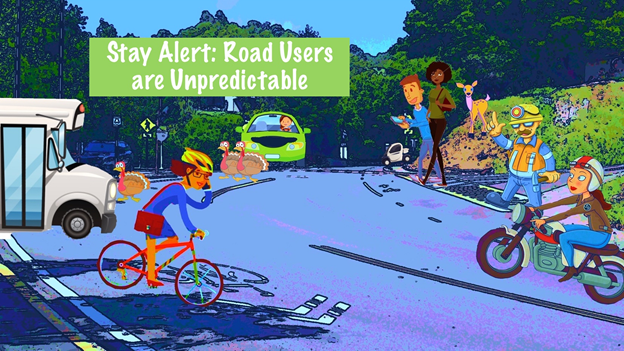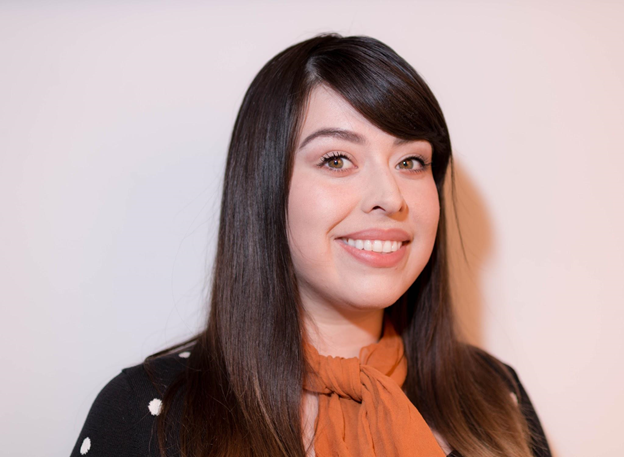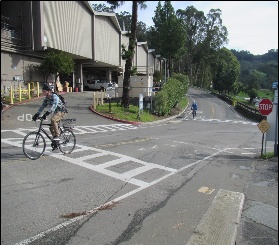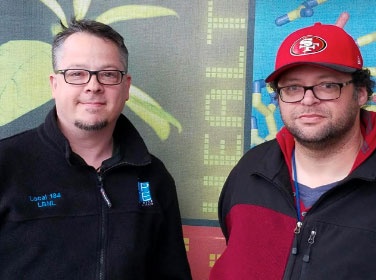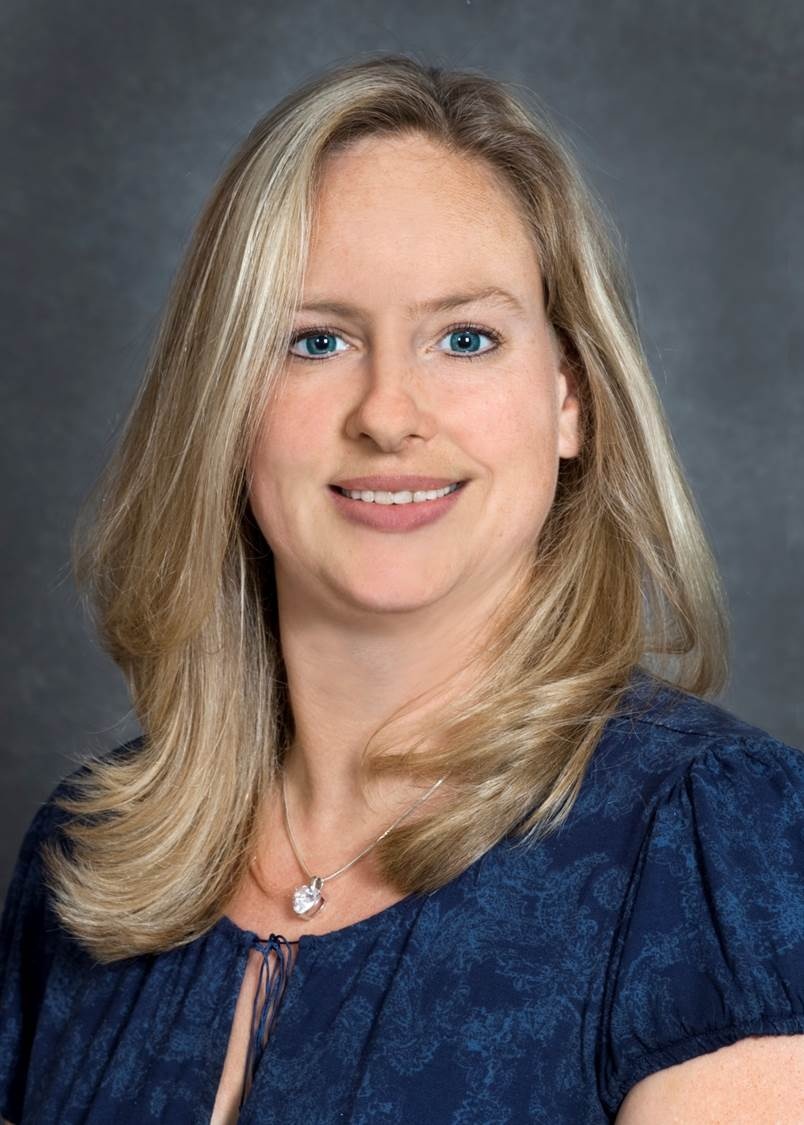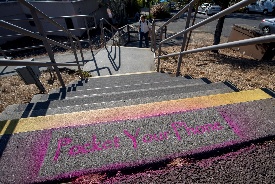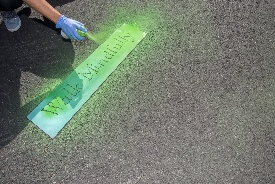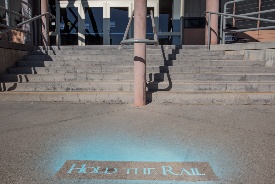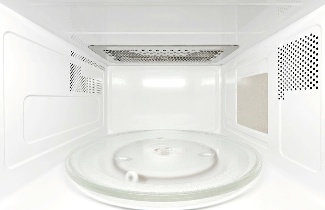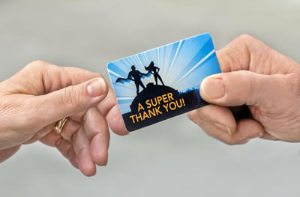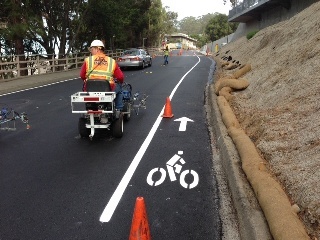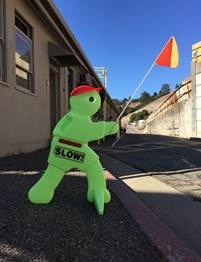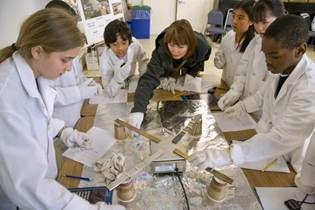With the rainy season upon us and shortened daylight hours, here are a few friendly safety reminders:
During the darkened commuting time, drivers, pedestrians and bicyclists need to be extra aware of each other.
Change the windshield wipers and check the tires on your vehicles.
While cycling, wear reflective clothing and ensure both front and back bike lights function.
Earbuds/headphones limit awareness of surroundings and increase pedestrian risks.
Check your building entrances for mats and plastic umbrella covers to ensure floors stay dry.
Use the flashlight available on most mobile phones when walking to or from your car in the dark.
Be careful when driving, walking or riding your bike on wet pine needles. Report a build-up of needles or debris to the Work Request Center.
If lights are out in key areas, like steps, pathways, or parking lots, report it to the Work Request Center.
For any safety concerns, e-mail [email protected]
Falls and other pedestrian injuries are on the rise at the Lab and around the world. Analysis by EHS shows the factors contributing to these injuries include being distracted while walking, reading an e-device or papers, irregular step height, and carrying too many objects so that it is not possible to hold the handrail.
To improve safety, Honolulu is now fining people for viewing their smart phones while crossing the street. Amsterdam has embedded LED-illuminated strips in crosswalks. At the Lab, temporary chalk stencils remind staff to Walk Mindfully, Pocket Your Phone, and Hold the Rail.
The Lab’s irregular terrain can be dangerous, especially when sidewalks are wet or covered with tree debris. The Facilities Division does its part to maintain landscapes and improve roadways. To complement these efforts, employees are asked to stay alert while walking around the Lab.
What else can you do to help? Discuss potential safety hazards with your coworkers and other employees. If you see someone walking while looking at their phone, let them know you are concerned for their safety. In the lab or on the streets, if you are on the receiving end of this type of feedback, simply thank your colleague for caring about your well-being and consider changing your behavior.
Of the 14 “Share the Road” Safety Image Contest entries, Wendy Avalos’ illustration, which pictures the many unpredictable road users at Berkeley Lab, was selected by employee voters as the winner of the $100 prize. Below, Wendi talks more about her inspiration for the winning image and her experience using multiple commute modes to get to work at Berkeley Lab.
What work do you do at Berkeley Lab?
I am currently an intern in the Workstation Support group at the lab. I have been learning so much from the team and feel very fortunate for this opportunity.
How many years have you worked here?
This June marks my 1st year at the laboratory.
Your winning image required creativity and skills. What is your background in graphic arts?
I enjoy enhancing my photography for friends and family from time to time in good humor. So I used the same method to work on my "share the road" image. I took a photo of the lab from building 65 and juxtaposed everything I have seen around the lab.
Tell me more about how you came up with the idea for this image.
I have commuted to lab in various ways during my time here. From driving my car for during onboarding orientation, to taking the Rockridge shuttle. So I wanted to include the things that I have encountered during my commute to the lab. Some mornings, I have been greeted by our Turkeys standing in the middle of the road, other mornings I'd admire the concentration on cyclist pedaling their way up a hill. Each morning is a little different.
Is one of the characters in the image you? How do you commute to the lab and what is your experience on the roads?
I currently commute to the lab on my motorcycle, which is probably why I decided to include a female rider on my image. As a motorcyclist, I feel I can appreciate the "share the road" ethos of the lab on different level as I am more vulnerable to external elements on my bike. It's good to be reminded that I am not the only one on the road, and as I hope that other commuters will watch out for me, I know I have to look out for others.
(Video Credit: David Stein)
In February 2017, a new Bike Shuttle Express was added to the Lab’s shuttle fleet to make things quicker, easier, and safer for bicycle commuters. The Express, which can carry up to 14 bikes and 14 passengers, makes four runs during the morning peak hours - from the Crescent off Oxford St at the Cal Campus to Building 69 near Grizzly Gate (see map) – a location that makes it easy for cyclists to get anywhere because it’s all downhill from there.
Drivers who use Grizzly Gate or park near Buildings 69, 75, and 76 may notice an uptick in the number of cyclists in the coming months and should make an extra effort to give them the full use of the lane. Drivers should particularly watch for cyclists at the first intersection below Grizzly Gate, which is challenging since downhill traffic does not stop and cyclists are not always easy to see.
Pedestrians in that area should also be extra alert for bicycle traffic especially at crosswalks, since bikes can reach relatively high speeds but aren’t as easy to see or hear as cars.
Cyclists will be navigating a relatively steep descent in mixed traffic and will want to apply such safety basics as:
Always wear a helmet, which is required at LBNL.
Obey all traffic signs and observe pedestrian right of way at crosswalks.
Be as visible as possible by wearing bright clothing and using bright bike lights and reflectors.
Descend the hills safely:
Relax your body.
Bend your elbows, relax your neck and shoulders, keep breathing and hold the bars firmly but not too tightly.
Set your gaze far ahead.
For controlled slowing, gently squeeze both brakes equally with two- to three-second pulses. Constantly riding the brakes on big descents can make rims overheat.
Apply the brakes before the turns rather than in them.
If you need to brake hard, be sure to keep your weight low and back and make sure that your arms are braced against the handlebars to absorb the force.
The new Bike Shuttle Express is part of an ongoing effort by the Lab to support cleaner and sustainable commute alternatives and promote traffic safety awareness. For more information see: http://commute.lbl.gov/. For more information about the shuttle, go here for FAQ.
(Photo credit: Mike White)
Safety culture is definitely “a thing” at MSD’s Center for X-Ray Optics, as evidenced by how research technicians Chanin King and Warren Holcomb identify and resolve safety issues. Chanin won the raffle this quarter for properly tracking and handling unlabeled waste, but both he and Warren have been recognized with a Hero Card on other occasions. For instance, last year Warren received a Hero Card from their supervisor for taking the required steps to resolve a situation that generated static electricity: the equipment was immediately unplugged, a note that described the problem was attached, and their supervisor was notified straightaway so that the issue could be resolved by the appropriate expert.
Chanin lucked out by winning this raffle, but these co-workers feel they hit the jackpot every day just by being on the same team and watching out for each other and their group. When asked about the Hero Card for handling unlabeled waste, Chanin explained the situation but also immediately thought of Warren. That level of teamwork may be present in many work situations but is not always acknowledged so explicitly. And who knows, maybe Warren’s Hero Card number – or yours – will pop up at the next raffle, when all the Hero Cards registered during the last four quarters are entered into a random drawing.
Hero Cards are one way Berkeley Lab invites you to recognize the heroes that help “safe” your work day. Anyone can give one to anyone – so get a few from [email protected] and make it “a thing” in your group. Be sure your recipient understands that in order to enter the raffle, the card must be registered. And also remember to “pass it on.” Two winning numbers are drawn every quarter, and each winner receives $50. For details on all safety awards, see: Safety Awards at a Glance.
One day Rachel Lance noticed that the floor of a heavily used elevator had developed a tripping hazard, so she reported it to a safety professional and it was promptly fixed. Several months later a colleague overheard her talk about that incident, just happened to remember the Hero Card in his wallet, and found this to be the perfect opportunity to pass it on in recognition of a good deed for everyone's safety. Rachel registered the card and a few months later her name came up as one of this quarter’s lucky Hero Card raffle winners.
Rachel was pleasantly surprised when she received the Hero Card, and then again by the news of the cash award. She knew about other safety awards, but hadn’t yet heard about this program. As an Administrative Assistant 3 in the Computational Research Division, she certainly is someone who moves things along, and offered a wellspring of ideas about how to spread the word. "Why not post a Hero Card flyer in common areas such as the cafeteria, and since a safety award system is in place, let's think of more ways to apply it. Safety awareness is really more about looking out for each other, but I'll be looking for a way to pass the Hero Card on - it was so nice to receive one." Rachel also suggested that everyone get to know their safety coordinator, building manager, and administrator so that safety-related issues can be resolved quickly.
Hero Cards are one way Berkeley Lab invites you to recognize the heroes that help “safe” your work day. Request a supply from [email protected] in time for your next group meeting and spread the word before the next raffle! Two winning numbers are drawn every quarter, and each winner receives $50. For more details on all safety awards, see: Safety Awards at a Glance.
You may have noticed the temporary neon-colored safety messages popping up in high traffic areas. They are the invention of a Berkeley Lab Safety Culture Work Group subcommittee whose task it was to create awareness around slip, trip, and fall prevention. The stenciling campaign involved brainstorming for catchphrases such as “Handrails, There for a Reason,” “Get a Grip,” and “A fall, a slip, a hospital trip.” Those ended up in the recycle bin, but the three top candidates are now in pink, green, and blue, inviting pedestrians to hold the rail, walk mindfully, and pocket your phone. The chalk is designed to wash away with the coming rain, but the hope is that the message remains.
“We’ve had some grievous injuries lately due to slips, trips and falls,” states Lab COO Glenn Kubiak. “The objective of this campaign is to create awareness about the little things we all can do to prevent these incidents and injuries. I think it’s a great demonstration of some of the key elements of Berkeley Lab’s safety culture, including having employees help each other to be safe...with a little humor thrown in to help get people’s attention and leaven a serious situation.”
Another invention of the subcommittee is the Slip, Trip, and Fall Prevention video produced by summer intern Haley Sutton: safetyculture.lbl.gov.
If you are interested in joining a Safety Culture Work Group subcommittee for future safety awareness projects such as these, contact Kat Wentworth, Safety Culture Work Group Chair at [email protected].
Practically everyone at the lab uses a microwave oven to heat something – maybe lunch or snack in the common kitchen, or perhaps a liquid or media in a dedicated laboratory microwave. Several times a day even, we place a container in the microwave, press a few buttons and presto – it’s done! What could go wrong with something that simple?
As it turns out, quite a few things have gone wrong at national laboratories, as documented in the Lessons Learned database. For instance at Berkeley Lab last May, agar was heated too long in tightly capped bottles and the force of the rupture of the bottles was enough to blow the microwave oven door off and break the turn plate. Shattered glass was found 20 feet away. Also at Berkeley Lab, the Lessons Learned database shows that in 2013 scorching was observed on a “to go” coffee cup after only 30 seconds of heating, and in 2008 a microwave oven fire occurred.
Another database - the Department of Energy’s Occurrence Reporting and Processing System (ORPS) – lists high-consequence incidents, and several involve microwave ovens. For instance, ORPS shows that in 2000 at Idaho National Laboratory an overcooked potato on a napkin activated the fire alarm and shut down an experiment, in 2002 at Los Alamos burning popcorn tripped the fire alarm, and in 2008 at SLAC reheating un-popped kernels of popcorn led to the evacuation of a large building.
Thankfully no injuries occurred in any of these microwave oven incidents, but shutting down an experiment or evacuating a building can be very costly in terms of time lost. Luckily, these types of incidents can generally be prevented by following a few basic safety guidelines (summarized in this Microwave Oven Safety Tip Sheet, which you can download and laminate).
Preparing to use the oven:
Be sure the oven is clean, since dehydrated debris can catch on fire.
Use the proper container. Glass, tempered glass, ceramic, wax paper, parchment paper, plain paper towels, plastic that is explicitly labeled as microwave safe are safe for heating if used according to instructions. Never use aluminum foil, anything with metallic trim, foam-insulated cups or dishes, single-use plastic containers, or any container that could melt or catch fire.
Loosely cover the container to prevent splatter, making sure that steam can escape.
Use the correct setting and time for the intended use. Note that liquids, especially, can become very hot if heated too long – try 30 seconds.
While the oven is in use:
Stay in the general area so you can respond at the first sign of scorching, smoke, flames, or sparks. Press the stop button or unplug the oven, and if the content has caught fire, keep the oven door closed.
After the oven is off:
Prevent scalding by not overheating liquids and by opening heated containers pointed away from you.
Prevent a container from shattering by never overheating a tightly closed container, and not subjecting a container to rapid temperature changes.
General safety tips:
Only plug the oven directly into the wall socket, never into a power strip.
When plugging into the wall socket, be sure to grasp the plug so that you will not contact the metal prongs.
If the oven operates with the door open, shut the door and turn the oven off immediately, unplug it, mark it for salvage, and do not try to use it again!
Check for appliance recalls to prevent spontaneous fires (unrelated to cooking).
Resources
Microwave Oven Safety Tip Sheet (Laminate and hang near the microwave)
Lessons Learned and Best Practices Database: https://lessonslearned.lbl.gov/general/home.aspx?message=
- UC Berkeley EH&S http://ehs.berkeley.edu/laser-safety/nir-manual-appendix-c-microwave-oven-safety-guidelines
Jeffrey Takakuwa, mechanical engineer in the Engineering Division is one of this quarter’s lucky Hero Card raffle winners. His good deed - which entered him into the raffle after receiving a Hero Card from a colleague and registering it - was spreading the word about two valuable resources offered to LBNL employees through UC Berkeley University Health Services. Jeff invited UCB Health Services Representative Craig Mielcarskio to his group’s monthly safety meeting to discuss benefits available under the Be Well at Work – Employee Assistance (formerly known as CARE Services) and Elder Care Programs. As an engineer, Jeff finds that "the more visible aspects of health and safety involve engineering and administrative controls, so not everyone would think of mental health as part of safety and health. I wanted to make sure that if anyone needs non-judgmental support for a current work or personal crisis, they know that help is available.” For more information, see https://uhs.berkeley.edu/bewellatwork/employee-assistance.
Hero Cards are one way Berkeley Lab invites you to recognize the heroes that help “safe” your work day. Request a supply from [email protected] in time for your next group meeting and spread the word before the next raffle! Two winning numbers will be drawn quarterly, and each winner will receive $50. For more information, see Safety Awards at a Glance.
Every year since the inception of the Director’s Award for Exceptional Achievement by Dr. Alivisatos in 2011, the Berkeley Lab director has had the opportunity to personally recognize the experts who are making a world of difference in a broad range of categories. This year incoming Director Dr. Witherell will have the honor of recognizing a new group of accomplished professionals nominated by the Berkeley Lab community.
In anticipation of the new nominations the Safety Culture Work Group would like to foreground the outstanding contributions to Berkeley Lab’s safety culture of past recipients of the Director’s Award for Safety. In every instance, the key to success was dedication to safety and influence that transcends the immediate work group.
2015 - Scott Taylor, Advanced Light Source (ALS) Safety Manager. Scott was recognized for 25 years of involvement in – and critical support of – Environment, Safety, and Health (EHS) programs and initiatives; over the years his efforts extended to the Life Sciences Division, ALS, and the Work Planning and Control Program.
2014 - Wayne Lukens, Staff Scientist, Chemical Science Division. Wayne was recognized for the breadth and depth of his knowledge in a broad range of EHS Division hazard control programs, and for his expertise in launching Work Planning & Control. The cumulative impact of his dedication has contributed greatly to a more balanced, consistent, logical, and risk-based approach to safety that has fully enabled science.
2013 - Ron Zuckerman, Facility Director within the Molecular Foundry. Ron was recognized for cultivating a work environment in which safety and efficiency are intricately and synergistically woven together. He has led by example and design to inspire principal investigators to create similar work environments.
2012 - David Shuh, Senior Scientist, Chemical Sciences Division. David was recognized for a 7-year history of consistent effort in ensuring radiation protection safety and Department of Energy regulatory compliance. Among his achievements are providing leadership as chair of Berkeley Lab’s Radiation Safety Committee.
2012 - Jim Floyd, former ALS Division EHS Coordinator and current EHS Division Director. Jim was recognized for his low key but immensely effective ability to promote safety culture to a large and diverse ALS user group. He unfailingly demonstrated outstanding and successful leadership in creating accountability in the areas of safety with a Lab-wide reach – and does so to this day.
Newest Hero Card raffle winner Michael Connolly, Principal Scientific Engineering Associate in the Materials Science Division, is a super hero when it comes to spreading safety culture to the diverse users that conduct work at the Molecular Foundry. “At Berkeley Lab we emphasize safety – which may be a new perspective for some visiting researchers – so our staff makes every effort to convey the safe work practices that have evolved as the science grows,” he observed when asked about the Foundry’s safety culture. He noted that its strength is rooted in a comprehensive onboarding process, a highly interactive communication culture, and an emphasis on learning how to do things better. “It’s an ongoing team effort where we strive to keep all lines of communication open – that’s essential in a dynamic research environment with so many new users passing through,” he said.
Hero Cards are one way Berkeley Lab invites you to recognize the heroes that help safe your work day. Request a supply from [email protected] in time for your next group meeting and spread the word before the next raffle! Two winning numbers will be drawn, and each winner will receive $50. For more information see Safety Awards at a Glance.
Recent changes at some locations at the main Berkeley Lab site are helping make it safer for our bicycling employees. The Lab has its first official bike lane! In addition, “sharrows” (a bicycle with arrows pointing forward) have been painted on many downhill lanes across the site to alert motorists of locations where bicycles may share the roadway. These are great milestones that improve road safety and show a commitment to encouraging alternative means of commuting to work. In this case, human power!
The bike lane was added from the Blackberry Gate to Perlmutter Road as part of the repaving project for Chu Road at the end of a busy capital construction project period that has provided us with the Computation Research and Theory Facility (CRT), General Purpose Laboratory (GPL), and Solar Energy Research Center buildings (SERC). At a minimum width of 4 feet, this lane meets the standards for a Class II bike lane. As such, it is labeled with the familiar bicycle symbol. While the lane from Perlmutter Road to the Bevatron Circle is narrower than 4 feet wide, the restriping created a wider shoulder for bicyclists to use. As a result, this shoulder cannot be, and was not, labeled as an official bike lane. Future plans call for widening this stretch of road to create a standard bike lane.
Bicycles traveling in the downhill direction are often able to keep up with vehicle traffic, especially in stretches where the speed limit is 15 miles per hour. To accommodate this fact, and consistent with the California Motor Vehicle Code, sharrows or shared roadway bicycle markings have been painted on the roadway to assist bicyclists with positioning on a shared roadway. They also alert motorists of the location a bicyclist may occupy within the roadway. Complementing the sharrow markings, signs noting that a bicyclist may take the full lane were also installed, as both as shown in the photo below.
These changes result from the hard work of the Traffic and Pedestrian Safety Committee, Safety Concerns, and Safety Culture Work Group working collaboratively with Facilities and Environment, Health, and Safety Divisions to improve roadway safety conditions at the Lab.
Did you know that over 2000 students, teachers and other members of the public visit the Lab each year? Workforce Development & Education hosts many of these guests on site to share the Lab’s work, as well as to inspire the next generation of scientists and engineers. Our largest program, Berkeley Lab Adventure Zone in Elementary Sciences (BLAZES), brings 5th grade classes (10-11 year olds) on site to learn about properties of matter. Students engage in hands-on activities led by Lab Employee volunteers as well as tour the Advanced Light Source. The BLAZES program runs October through May. Safety is at the forefront of all these visits and starts even before visitors step foot on site. Each morning, brightly colored markers that alert passing traffic to the presence of children are placed at the entrances of Building 7, the first stop for most of the groups. When you see these markers, please SLOW DOWN, because groups of students may be entering or exiting the building. While we may be familiar with our surroundings, our guests are here for the first time, and it is important that we are vigilant when we are driving nearby.
If you would like to be a BLAZES volunteer please register for our upcoming Volunteer Preparation Workshop which will be held on October 7 from 11:30-1:30 in room 7-211 using this form. If you are interested in learning more about other educational outreach opportunities, please e-mail [email protected].
In response to recent electrical work accidents at Berkeley Lab, a lot of energy has gone into developing a new Electrical Safety Program that affects primarily the work performed by trained qualified electrical workers. But what about the rest of us who do not work closely with specialized electrical equipment - what can we do to keep electrical accidents and fires resulting from ordinary but faulty electrical equipment from happening?
One thing everyone can do is immediately report anything that looks like an electrical accident waiting to happen to the Division Safety Coordinator or [email protected]. Examples of signs of trouble that have been reported in the recent past include:
- Frayed insulation anywhere on a power cord, which often occurs at the ends where the cord attaches to the plug or the appliance.
- Melted electrical equipment housing, including plugs and receptacles.
- Exposed metal parts that may conduct electrical energy. For instance, a computer missing its cover or knockout for access could result in electrical shock to another worker.
In addition to reporting sure signs of trouble, you can improve electrical safety by:
- Sending old outdated equipment to salvage.
- Unpluging “daisy chained” extension cords; never use more than one extension cord, and make sure it is rated for the intended use.
- Removing any personal electrical equipment from the workplace that is not approved by a Nationally Recognized Testing Laboratory (NRTL) such as Underwriters Laboratory (UL).
- Finding out more about electrical safety by reviewing Environment, Health, and Safety Training Course 260 and becoming familiar with other resources such as Portable Heater Safety and Electrical Safety General Field Guides (Field Guide 20 is on Electrical Extension Cords).
And finally, one thing you can do any time is recognize a co-worker who is taking steps to improve safety - give them a Hero Card (for a supply of Hero Cards contact [email protected]) or nominate them for a Safety Spot Award.
How does starting a departmental conversation on ergonomics turn into a $50 prize? In Jack Krous’s case, his division business manager gave the LBNL IT professional a Hero Card because of his proactive problem solving approach related to ergonomics. The benefit to the department was having a conversation on a wider scale to raise awareness about preventing and alleviating repetitive stress injuries. The benefit to Jack - who promptly registered the Hero Card - was that it made him eligible to win the raffle. Jack was one of two winners in the second quarter drawing.
With the next quarterly drawing coming up it’s a great time to dig out those Hero Cards from the back of your wallet or desk drawer and award one to your favorite safety hero. If you are the lucky recipient be sure to register your card as described on the back of the card and pass it along promptly to someone who is safe-ing the day. Hero Cards are available from [email protected].
Before leaving the topic of ergonomics, two top tips are: if you sit at a desk most of your work day the most important things you can do are make sure your work space is set up for optimal ergonomics, and get as much movement into your day as you can. Give those sitting muscles a break! For more information visit LBNL’s ergo website: https://sites.google.com/a/lbl.gov/lbnl-ergonomics/
